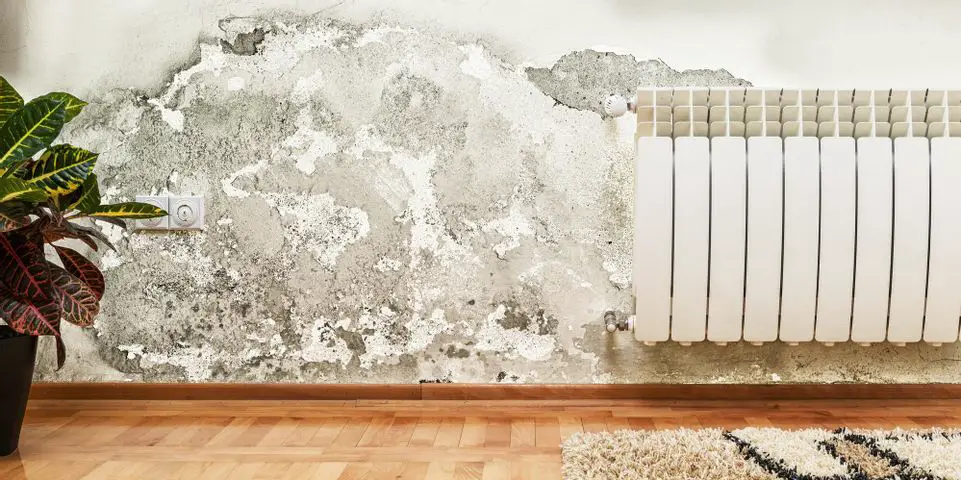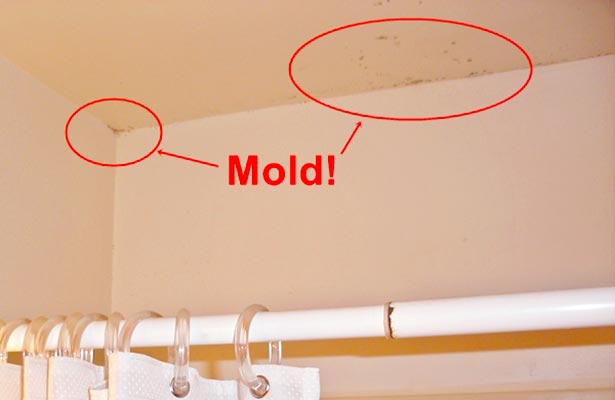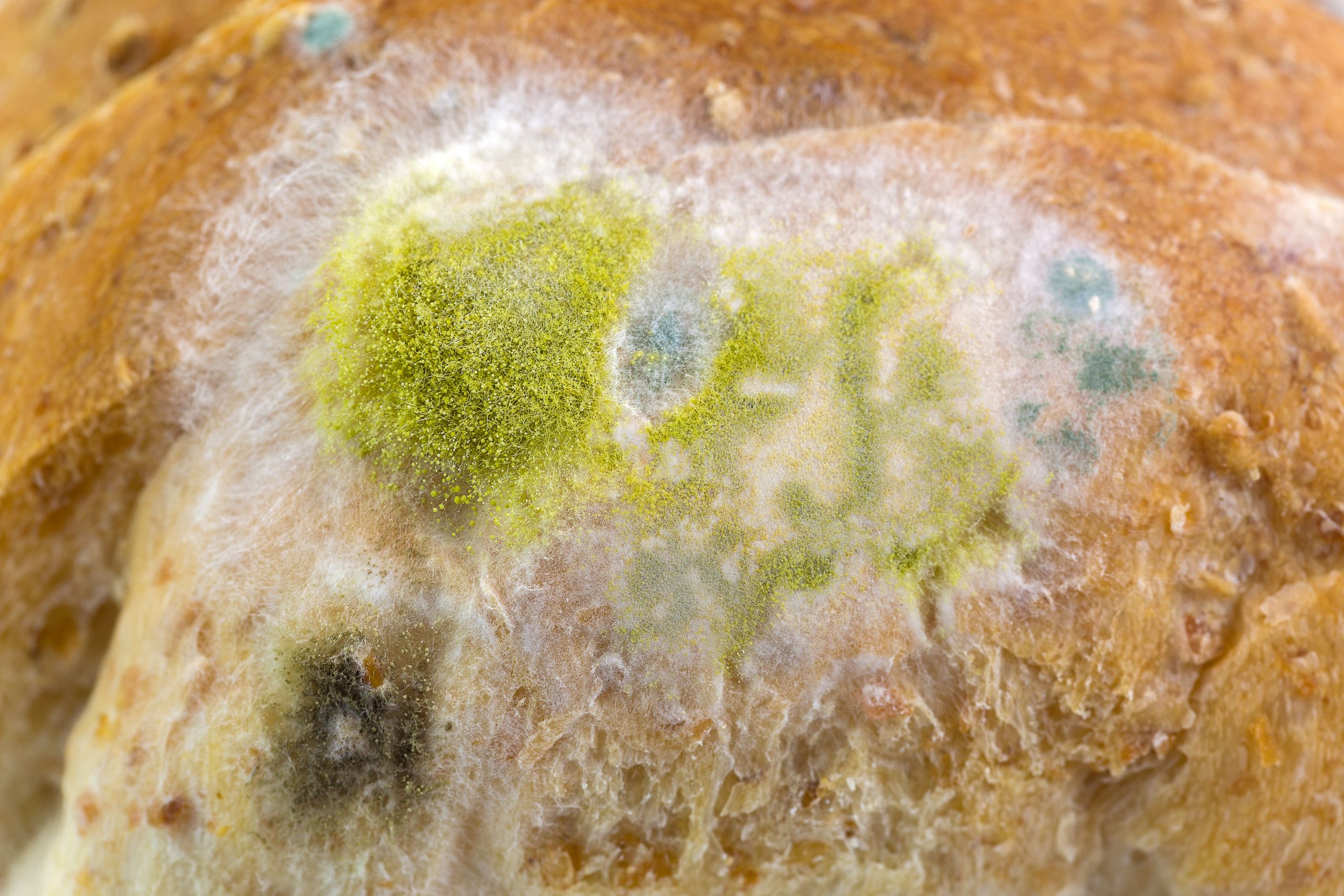How Can Mold Affect My Health
Many molds can cause health effects. Molds produce allergens, irritants and,sometimes, toxins that may cause adverse reactions in humans. A reaction tomold depends on how much a person is exposed to, the age of the person and thepersons sensitivities or allergies. The same amount of mold may causehealth effects in one person, but not in another.
Exposure to mold can cause a variety of symptoms. Sensitive people who havetouched or inhaled mold or mold spores may have allergic reactions such as arunny nose, sneezing, nasal congestion, watery eyes, skin rash and itching. Molds can trigger asthma attacks in people who are allergic tomolds, causing wheezing, chest tightness and shortness of breath. A diseaselike pneumonia may also develop after exposure to mold, but this is uncommon.
Infectious diseases from molds can occur in people with weakened immunesystems, such as those who are immune-compromised or immune-suppressed fromdrug treatment. Some types of mold are known to cause infections inimmune-compromised people. Such infections can affect the skin, eyes, lungs orother organs. These are considered opportunistic infections that usually do notaffect healthy people.
What Are Symptoms And Signs Of Mold Exposure
Molds produce irritating substances that may act as allergy-causing substances in sensitive individuals. Furthermore, some molds produce toxic substances known as mycotoxins, but mold itself is not poisonous or toxic. The term “toxic mold,” therefore, refers to the fact that certain kinds of mold can produce mycotoxins. The conditions under which some molds produce toxins are not understood, and the presence of mold, even a mold that is capable of producing toxins, does not always imply that toxins are being produced or that a health risk or problem is present. Mold may not cause any health problems, or it may lead to allergy or other symptoms in people, including adults and children, who are sensitive to molds.
Allergic reactions to mold are the most common health effects of mold and are therefore the greatest health risk related to mold. Allergic reactions may happen immediately or develop after a period following exposure. Both growing mold and mold spores may lead to allergic reactions. Symptoms and signs of mold allergy may include
Mold or mold spores may cause asthma attacks in people who have asthma and are allergic to mold. Even in some non-allergic individuals, mold can cause symptoms of irritation in the eyes, skin, and airways. For example, the “black mold”Stachybotrys, along with some other types of mold, produces toxins known as mycotoxins that can cause irritation of the skin and airways in susceptible individuals.
Could Your Symptoms Be From A General Mold Allergy
Regardless of the species of mold in question, symptoms of a mold allergy can appear very similar, especially when looking at many individuals. So if you see black-colored mold and experience allergic symptoms, it could be Stachybotrys, or it could be another species of mold. That said, the same person can react differently to different molds. For example, one person may have severe dry eyes in response to a Cladosporium exposure, while Aspergillus exposure may cause wheezing and asthma-like symptoms.
You May Like: How To Clean Mold From Boat Seats
What Are The Symptoms Of Black Mold Exposure
If you find black mold on your property, theres no need to panic. But black mold presents more health risks to sensitive groups like those with respiratory conditions or immune conditions.
According to the Centers for Disease Control , black mold spores can generate cold- or flu-like symptoms such as:
- Stuffy nose
- Shortness of breath
- Nausea
So while black mold probably wont kill you, it can make you feel sick and should be removed as soon as possible.
What Are The Treatments For Mold Allergy

In some cases, there may be ways to reduce or remove mold exposure. This may not always be possible and you may need medications.
- Avoid contact with mold.
- Take medications for nasal or other allergic symptoms. Antihistamines and nasal steroids are available over the counter without a prescription. If you have allergic asthma, talk to your doctor about which medicines may be best for you. You might also be a candidate for allergy shots. Allergy shots may help reduce symptoms and medications. Learn more about allergy treatments.
Look for this mark to find products proven more suitable for people with asthma and allergies. Find CERTIFIED asthma & allergy friendly® products on our Certification program website.
Read Also: How To Clean Mold From Boat Seats
What If I Dont See Any Mold
Unfortunately, just because you dont see mold doesnt mean that it isnt there. Mold is an expert at hiding in the places you cant see. It can live behind drywall, in the ceiling, in your ventilation, and even in your homes insulation. Regardless of where it lives, if you have mold growing in your home, its spores will be airborne. Being constantly exposed to those in the air that you breathe can have many negative effects on your health.
Can Living In A House With Mold Make You Sick
Damp and mold are sadly common occurrences in homes that have poor ventilation, single-glazed windows, and other forms of poor insulation. Black mold is one of the more severe types of fungus that can grow in these conditions.
Being constantly exposed to and breathing in black mold is very damaging to your health, a conclusion that goes undisputed in the research behind it. Here are just some of the discovered complications that fungus exposure can cause:
- Coughing
- Inability to breathe
- Bronchitis
just to name a few. It can damage your health permanently depending upon the amount of fungus, the length of your exposure, and whether you already have any respiratory conditions.
Another feature of black mold is that it can grow in those hard-to-reach or seldom-visited places, like behind cupboards and underneath floorboards. This means it could be completely unnoticeable to you, despite the fact that youre breathing it in. It can silently affect your health without your knowledge.
Read Also: Can Black Mold Be Removed From Wood
Mold Reactions: Who’s At Risk
For people sensitive to mold, inhaling or touching mold spores can cause allergic reactions, including sneezing, runny nose, red eyes, and skin rash. People with serious mold allergies may have more severe reactions, including shortness of breath. In people with asthma who are allergic to mold, breathing in spores can also cause asthma attacks.
In addition to people with allergies and asthma, others who may be more sensitive to the effects of mold include:
- Infants and children
- People with chronic lung disease
I Found Mold Growing In My Home How Do I Test The Mold
If you can see or smell mold, a health risk may be present. You do not need to know the type of mold growing in your home, and CDC does not recommend or perform routine sampling for molds. No matter what type of mold is present, you should remove it. Since the effect of mold on people can vary greatly, either because of the amount or type of mold, you cannot rely on sampling and culturing to know your health risk.
You May Like: How To Prevent Mold In Shower Grout
Do You Have Mold On Drywall Heres What To Do
Mold on drywall is any home owners worst nightmare. The first sign of it growing in your home is going to send anyone into a panic. If youve found mold, theres no need to worry though.
It can be removed, and you can be free of it. Heres how to find it and what to do if you do see mold growing in your home.
Coughing And Shortness Of Breath
The irritation and inflammation caused by mold often lead to frequent coughing that is otherwise unexplained.
The throat and lungs are irritated continuously when repeatedly exposed to mycotoxins. If the issue isnt addressed, this coughing can develop into more severe conditions such as pneumonia and bronchitis.
The same inflammation that causes irritated, constricted airways that lead to wheezing and coughing can eventually lead to shortness of breath.
This gives a feeling of tightness in the chest. It may feel like you are unable to take in a full breath.
Also Check: What Causes Mold On Ceiling In Bathroom
Breathing In Mold Spores What To Do
| by Fereydoon BatmanghelidjNew Edition! This is the third edition of Dr. F. Batmanghelidj’ classic water book! THis book, based on a pioneering physician’s twenty years of clinical and scientific research into the role of water in the body, explains a breakthrough discovery that Unintentional Chronic Dehydration produces stress, chronic pains and many painful degenerational diseases. Dry mouth is not the only sign of dehydration waiting to get thirsty is wrong. You will learn the different signals of thirst when your body is calling for water.by Andrew W. SaulThe focus of this book is how we can get better using practical, effective and safe natural therapies. The effective use of nutritional supplements and natural diet saves money, pain and lives. This title provides information on: Nutritional therapy for more than 80 health conditions How to improve one’s health through changes to diet and lifestyle Practical tips on juicing and growing a vegetable garden The latest scientifically validated supplement recommendations. |
What Are Microbial Volatile Organic Compounds

Another source of irritation from mold exposure comes from substances knownas microbial volatile organic compounds . These compounds are producedthrough fungal metabolism and are released directly into the air, often givingoff strong or unpleasant odors. Exposure to mVOCs from molds can irritate theeyes and respiratory system and has been linked to symptoms such as headaches,dizziness, fatigue, nasal irritation and nausea. The effects of mVOCs are notcompletely understood and research is still in the early stages.
Recommended Reading: Mold Removal Bathroom Ceiling
A What Causes Mold In Your Lungs Infection
As a form of fungi, the effects of mold in lungs can cause pneumonia in healthy people, and severe pneumonia in people with immune system disorder. The infection is proven to be rapidly fatal for patients recovering from chemotherapy or HIV-infected people who also have advanced disease.
Some of the causes of mold growing in lungs include invasive aspergillosis, pneumocystis fungus, and histoplasmosis mold.
How To Know If You Have Black Mold In Your House
Mold isnt always visible. If you can see mold, its only a sign of the real potential health risk, which is the harmful types of unhealthy levels of mold in the air of your home or workplace.
Airborne mold is all around us in both the outdoors and indoors. The types and amount of mold is what determines the potential health risk. Most of us are typically accustomed to the varieties and amounts of mold present in our outdoor environments.
Healthy indoor environments will have mold conditions similar to or better than those in the surrounding outdoors. Over time, because of moisture , many indoor spaces develop unhealthy types and/or unhealthy levels of airborne mold that can be harmful to you or your pets.
These signs will help you know if you possibly have unhealthy mold conditions in your house:
- Allergic symptoms
- A damp or musty odor in one or more places
- Frequent headaches
- The air in the home feels different
- Your house has been flooded or currently has leaks
- You previously tried removing mold yourself
Take note of how you feel in and out of the house. If the symptoms disappear or decrease when youre out and about, then you might have a mold problem, yes, even if you cant see mold.
You May Like: How To Remove Mildew From Canvas Boat Cover
What Causes Mold Sickness
The toxins in your system from breathing in mold spores add to the total amount of toxicity in your body. We call this the Total Body Burden. When your burden is high, you start experiencing symptoms many which are seemingly unrelated.
For most people, toxins get flushed out from the body when eliminating waste.
For some, the toxic load is so high that its too much for the body to eliminate them all efficiently. For others, they may have poor detoxification processes or they may even recycle or reabsorb these mycotoxins back, as the body tries to eliminate them. Genetics plays a huge role in this difference from person to person
In short, multiple symptoms happen because, as we say in environmental medicine genetics points the gun, and then the environment pulls the trigger.
Can My Home Be Tested For Mold
If you can see or smell mold, testing is usually not necessary. It is likely that you have a moisture problem that needs to be fixed.
Testing for mold is very difficult and expensive. Homeowners must hire a contractor to test their homes. Testing cannot determine whether health effects will occur. Mold is normally found outdoors and levels fluctuate from day to day depending on the season. Due to these uncertainties, IDPH does not recommend testing in most cases.
Also Check: How To Get Rid Of Black Mold In Hot Tub
What Are The Symptoms Of Aspergillosis
Symptoms can range from mild to severe, depending on the type of aspergillosis.
Pulmonary aspergillosis might not cause any symptoms, especially in the early stages. If the disease progresses, symptoms may include:
- Coughing, sometimes accompanied by mucus or blood.
- Bloody cough or massive bleeding from the lungs.
Allergic bronchopulmonary aspergillosis may cause:
- Coughing accompanied by mucus or blood.
- Wheezing or worsening of asthma.
- Fever.
- Increased mucus or sputum secretions.
- Inability to tolerate exercise or asthma brought on by exercise.
Many patients with asthma or cystic fibrosis already experience respiratory symptoms similar to those caused by an allergic reaction, so it may be difficult to detect ABPA in these situations. Sometimes, a worsening of symptoms such as coughing and wheezing is the only sign that the person is experiencing an allergic reaction.
If the allergic reaction recurs over time, and the lungs become inflamed repeatedly, damage to the lungs and central airways can occur. Recurrent allergic reactions may cause scarring of lung tissue and widening of the central airways, a condition known as bronchiectasis.
Can I Just Get Into The Wall And Use Bleach To Clean It
It may be tempting to get into the wall and spray everything with bleach by yourself. However, if you have never done this before, it is better to call someone licensed to deal with mold. This is especially true if you have never gone into the wall and dont know how to detect how extensive the mold damage is. Leaving the eradication of mold to professionals will save not only your health but also your sanity. A professional team will have all the protective gear, detection tools and methods necessary to get rid of all the mold in your home.
Read Also: How To Clean Mold From Boat Seats
I Heard About Toxic Molds And Black Molds That Grow In Homes And Other Buildings Should I Be Concerned About A Serious Health Risk To Me And My Family
There is always a little mold everywhere in the air and on many surfaces.
Certain molds are toxigenic, meaning they can produce toxins . Hazards presented by molds that may produce mycotoxins should be considered the same as other common molds which can grow in your house. Not all fungi produce mycotoxins and even those that do will not do so under all surface or environmental conditions.
Mold growth, which often looks like spots, can be many different colors, and can smell musty. Color is not an indication of how dangerous a mold may be. Any mold should be removed and the moisture source that helped it grow should be removed.
There are very few reports that toxigenic molds found inside homes can cause unique or rare health conditions such as pulmonary hemorrhage or memory loss. These case reports are rare, and a causal link between the presence of the toxigenic mold and these conditions has not been proven.
Links with this icon indicate that you are leaving the CDC website.
- The Centers for Disease Control and Prevention cannot attest to the accuracy of a non-federal website.
- Linking to a non-federal website does not constitute an endorsement by CDC or any of its employees of the sponsors or the information and products presented on the website.
- You will be subject to the destination website’s privacy policy when you follow the link.
- CDC is not responsible for Section 508 compliance on other federal or private website.
The Journey From Outdoor Mold Spore To Indoor Mold Problem

Whether out enjoying a hike or inside examining the grocery stores produce section, we are constantly transporting and breathing in tiny mold spores. An open window, a family pet or even your sneakers can bring outdoor spores to a new homeyour home or workplace.
These mold spores can be harmless. However, problems arise if the spores come in contact with a moisture source. Moisture lets the spores grow into mold that could affect health.
You May Like: How To Mold Leather Holster
Can Mold Exposure Be Lethal
This is a major area where information becomes muddled. Some sources of information will tell you that mold exposure of any kind can be deadly, whereas others will say that only exposure to toxic molds can seriously harm you.
Fortunately, exposure to mold isnt usually lethal to a healthy person. However, higher-risk groups can experience far more serious health complications after being exposed to pathogenic and toxigenic molds. Similar to those listed above, people at a higher risk include:
- Pregnant women
- People who have recently had surgery or major medical treatments
- People with compromised immune systems or immune disorders
